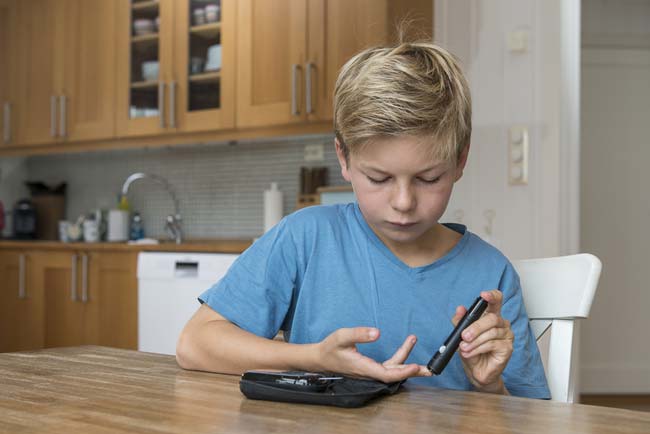When we think of diabetes, we often think of adults living with the condition. But according to the American Diabetes Association, more than 190,000 American kids are living with diabetes. And it’s the type of diabetes that’s increasingly being diagnosed in kids that’s the biggest concern.
In the past, when children were diagnosed with diabetes, they typically had Type 1 diabetes. In fact, the condition was previously even known as “juvenile diabetes.”
But today, an increasing number of younger people are being diagnosed with Type 2 diabetes, which was often called “adult-onset diabetes” in the past.
Why is that so concerning, you might wonder? It’s a growing concern for health providers and other experts because Type 2 diabetes is typically associated with obesity.
Let’s take a look at both types of diabetes and what they mean for kids.
Type 1 diabetes: Still the most common in kids
When kids are diagnosed with diabetes, they’re still most likely to be diagnosed with Type 1 diabetes. This type of diabetes affects around 1.25 million American children and adults.
With Type 1 diabetes, the body simply does not produce insulin, the hormone that’s necessary to move glucose from the bloodstream into the body’s cells. Because of that, too much glucose stays in your bloodstream, which can lead to serious health conditions affecting the heart, eyes, kidneys and nerves.
Type 1 diabetes typically occurs because the body’s immune system destroys the cells in the pancreas responsible for producing insulin.
If your child has undiagnosed (or unmanaged) Type 1 diabetes, he or she may experience:
- Extreme thirst
- Frequent urination
- Extreme hunger
- Extreme fatigue
- Slow-healing wounds
- Dry or itchy skin
- Blurry vision
Doctors can perform a simple blood test to determine if Type 1 diabetes is present. After a person is diagnosed with Type 1 diabetes, he or she will need to take insulin throughout life and regularly check blood glucose levels.
If your child has recently been diagnosed with Type 1 diabetes, the American Diabetes Association offers a helpful kit designed to help your family understand the condition and how it can be successfully managed.
Type 2 diabetes: Becoming more common in kids
In the past, this type of diabetes was rarely ever diagnosed in children or young people. But as Americans become more overweight and obese — at younger ages — Type 2 diabetes is becoming more common in this group.
Overall, Type 2 diabetes is far more common than Type 1 diabetes, affecting as many as 30.3 million Americans. That’s around 9.4 percent of the population.
With Type 2 diabetes, the body doesn’t use insulin well. Just like with Type 1 diabetes, this can lead to serious health problems as glucose builds up in the bloodstream.
However, unlike with Type 1 diabetes, which occurs when the pancreas stops producing insulin, Type 2 diabetes is largely preventable with healthy lifestyle habits. Being overweight or obese, not getting enough physical activity, and eating a poor diet are all risk factors for Type 2 diabetes.
A person with undiagnosed Type 2 diabetes will typically experience symptoms similar to the ones outlined above. This type of diabetes is also diagnosed using a simple blood test. After a diagnosis, doctors often prescribe a combination of medications and lifestyle changes to manage the condition.
If you think your child may be at risk for developing Type 2 diabetes, there are steps you can take to help prevent the condition. As a family, look to become more physically active and eat healthy, balanced meals. Kids should get at least 60 minutes of physical activity each day, and limiting screen time is one way to make that happen.
If your child has diabetes…
Both types of diabetes can be managed successfully. Reassure your child that he or she can stay healthy with a few adjustments. If you’re not sure how to handle a diabetes diagnosis, the American Diabetes Association offers great resources for parents and kids.
But the biggest takeaway we can offer? Make sure your child knows that having diabetes doesn’t have to keep him or her from doing the things he or she loves.
If you believe your child may have diabetes, talk with your pediatrician. Need a doctor? Find one here.







